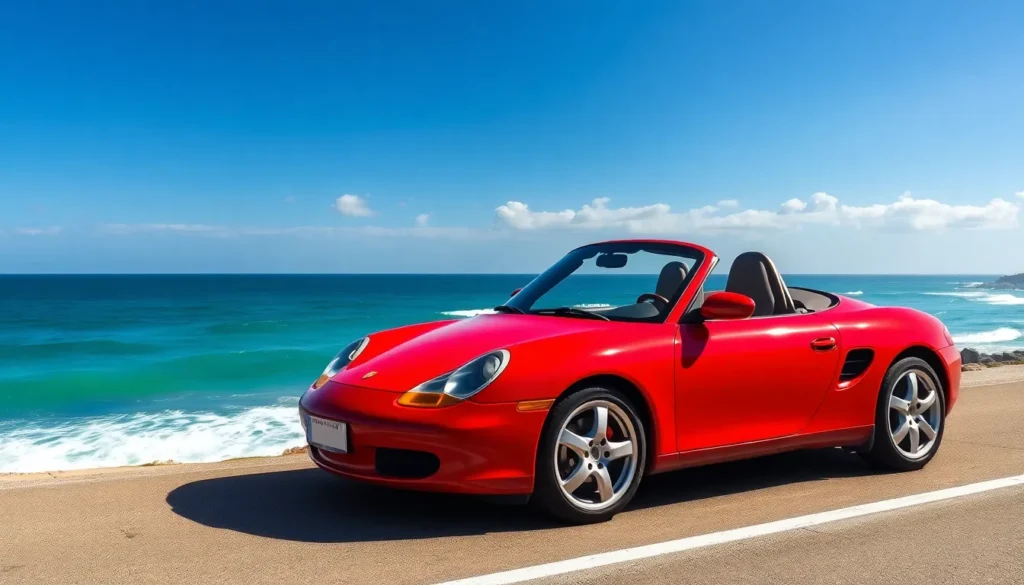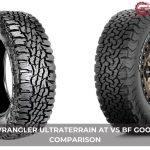The Porsche Boxster 986 revolutionized the sports car industry when it debuted in 1996. This mid-engine roadster brought authentic Porsche DNA to enthusiasts who’d previously been priced out of the brand’s lineup. We’ve witnessed countless drivers discover pure driving joy behind the wheel of this remarkable machine.
What makes the 986 generation so special? It’s the perfect blend of affordability and performance that defines modern sports car ownership. We’re talking about a genuine Porsche that delivers thrilling acceleration sublime handling and that unmistakable flat-six soundtrack – all without the supercar price tag that typically comes with the Stuttgart badge.
Whether you’re considering your first Porsche purchase or adding to an existing collection the Boxster 986 represents an incredible opportunity. We’ll explore everything from common maintenance concerns to performance modifications that’ll help you make the most well-informed choice about this iconic roadster.
What Is the Porsche Boxster 986?
The Porsche Boxster 986 represents the first generation of Porsche’s mid-engine roadster that launched in 1996. We recognize this model as a revolutionary entry point into the Porsche brand that maintained authentic performance credentials while offering increased accessibility.
Stuttgart’s engineers designed the 986 around a water-cooled flat-six engine architecture, departing from traditional air-cooled systems found in earlier Porsche models. This roadster featured a 2.5-liter horizontally opposed engine producing 201 horsepower in base trim, later expanded to include a 2.7-liter variant generating 217 horsepower and eventually a 3.2-liter S version with 250 horsepower.
Production of the Boxster 986 spanned from 1996 to 2004, establishing key design elements that define modern Porsche roadsters. Engineers positioned the engine directly behind the driver’s seat, creating optimal weight distribution and improving handling dynamics compared to front-engine sports cars.
The 986 chassis incorporated several innovative features that distinguished it from competitors:
- Mid-engine layout providing 47/53 front-to-rear weight distribution
- Convertible soft-top mechanism operating electrically in 12 seconds
- Independent suspension with MacPherson struts front and rear
- Integrated roll bars deploying automatically during rollover detection
- Tiptronic transmission option alongside traditional 5-speed manual
Manufacturing data shows Porsche produced approximately 165,000 units of the 986 generation across all variants. Base model acceleration achieved 0-60 mph times of 6.7 seconds, while the Boxster S variant reduced this figure to 5.9 seconds.
| Model Variant | Engine Size | Power Output | 0-60 mph | Top Speed |
|---|---|---|---|---|
| Boxster 2.5L | 2.5L H6 | 201 hp | 6.7 sec | 149 mph |
| Boxster 2.7L | 2.7L H6 | 217 hp | 6.4 sec | 154 mph |
| Boxster S 3.2L | 3.2L H6 | 250 hp | 5.9 sec | 162 mph |
Design language of the 986 introduced proportions that became synonymous with Porsche roadsters, featuring pronounced side air intakes, integrated headlights, and a distinctive rear spoiler that automatically deployed at highway speeds. Interior appointments included leather sport seats, aluminum trim accents, and a driver-focused cockpit layout consistent with Porsche’s performance heritage.
Design and Styling of the Boxster 986

The Boxster 986 established a revolutionary design language that seamlessly blended classic Porsche aesthetics with modern roadster functionality. This design philosophy created timeless proportions that remain influential in contemporary sports car development.
Exterior Design Elements
Clean lines define the Boxster 986’s silhouette with its distinctive mid-engine proportions creating perfect visual balance. Side air intakes feature prominent placement behind the doors to channel cooling air directly to the engine bay. These functional design elements distinguish the 986 from traditional front-engine sports cars.
Integrated headlights mark a departure from traditional Porsche pop-up designs while maintaining the brand’s signature appearance. Oval-shaped units house xenon bulbs in higher trim levels and provide exceptional illumination performance. Chrome bezels surround each headlight assembly to add premium detailing.
The front bumper incorporates large air intake openings that feed the radiators and oil coolers. Lower spoiler elements enhance aerodynamic efficiency at highway speeds. Body-colored bumper construction eliminates the plastic appearance common in competing roadsters.
Rear design features include a distinctive spoiler that deploys automatically at 75 mph for enhanced stability. Taillights use LED technology in later model years with clear lens covers creating modern appeal. Dual exhaust outlets exit through integrated bumper openings rather than protruding tips.
Convertible soft top construction utilizes multi-layer fabric with excellent insulation properties. Electric operation completes the opening sequence in approximately 12 seconds. Storage compartment design accommodates the folded top without compromising trunk space.
Interior Layout and Features
Driver-focused cockpit design positions all primary controls within easy reach of the seated driver. Instrument cluster features three analog gauges including a prominent central tachometer. This layout reflects traditional Porsche racing heritage while incorporating modern functionality.
Seats offer excellent lateral support with available leather upholstery in multiple color combinations. Standard manual adjustment provides 6-way positioning while power seats became optional in later years. Heating elements warm both seats during cold weather operation.
Center console houses climate controls and radio equipment with logical button placement. Cup holders integrate seamlessly into the dashboard design without appearing aftermarket. Storage compartments include door pockets and a lockable glove box.
Interior materials showcase quality construction with soft-touch surfaces throughout the cabin. Available wood trim accents complement leather surfaces in premium packages. Door panels feature integrated armrests and window switches positioned for intuitive operation.
Dashboard design incorporates subtle curves that echo the exterior bodywork styling. Air conditioning vents adjust directionally and include temperature blend doors. Interior lighting utilizes amber-colored bulbs to maintain night vision during spirited driving sessions.
Engine Performance and Specifications

The Porsche Boxster 986’s engine lineup demonstrates the evolution of water-cooled flat-six technology throughout its production run. Performance capabilities vary significantly across the three available engine configurations.
Base 2.5L and 2.7L Engines
The original 2.5-liter flat-six engine produces 201 horsepower at 6,000 rpm and 181 lb-ft of torque at 4,500 rpm. This naturally aspirated powerplant delivers 0-60 mph acceleration in 6.7 seconds with a top speed of 149 mph.
Porsche introduced the upgraded 2.7-liter engine in 2000, generating 217 horsepower at 6,300 rpm and 192 lb-ft of torque at 4,750 rpm. The larger displacement engine reduces 0-60 mph times to 6.4 seconds while maintaining the same 149 mph maximum velocity.
Both engines feature aluminum construction with direct fuel injection and variable valve timing. Redline occurs at 6,800 rpm across both configurations, with compression ratios of 11.0:1 for optimal performance on premium gasoline.
| Engine | Displacement | Horsepower | Torque | 0-60 mph | Top Speed |
|---|---|---|---|---|---|
| 2.5L | 2,480 cc | 201 hp @ 6,000 rpm | 181 lb-ft @ 4,500 rpm | 6.7 seconds | 149 mph |
| 2.7L | 2,687 cc | 217 hp @ 6,300 rpm | 192 lb-ft @ 4,750 rpm | 6.4 seconds | 149 mph |
S Model 3.2L Engine Performance
The Boxster S’s 3.2-liter flat-six engine represents the pinnacle of 986 performance with 250 horsepower at 6,200 rpm and 225 lb-ft of torque at 4,750 rpm. This flagship powerplant achieves 0-60 mph acceleration in 5.9 seconds and reaches a top speed of 161 mph.
VarioCam Plus technology enhances the S model’s engine performance through variable valve timing and lift on both intake and exhaust valves. The system optimizes power delivery across the entire rpm range while maintaining fuel efficiency and emissions compliance.
Engine displacement increases to 3,179 cc through larger bore dimensions, while the compression ratio remains at 11.0:1. The S engine’s aluminum construction incorporates strengthened internals to handle the increased power output and higher stress levels during spirited driving.
Performance characteristics include a broader torque curve with peak output available from 4,750 rpm to 5,500 rpm. The engine’s responsiveness improves significantly compared to smaller displacement variants, delivering immediate throttle response and linear power delivery throughout the rev range.
Driving Experience and Handling
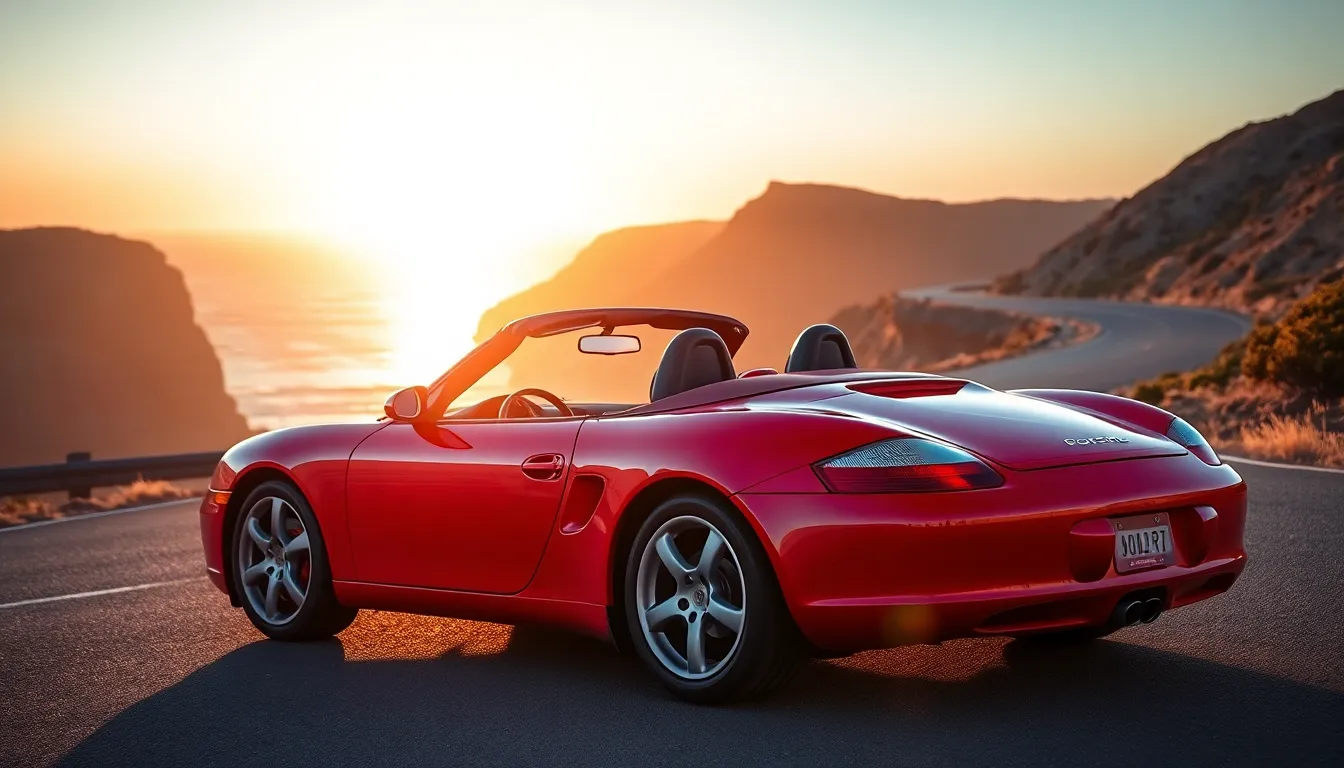
The Boxster 986’s mid-engine layout creates exceptional balance and responsiveness that transforms every drive into an captivating experience. We discovered that this chassis configuration delivers precise steering feedback and predictable handling characteristics across diverse driving conditions.
Road Performance Characteristics
The Boxster 986 excels on public roads through its compliant suspension tuning and responsive throttle delivery. We found the steering requires minimal input corrections during highway cruising while providing excellent road feel through tight corners. The 50/50 weight distribution eliminates understeer tendencies common in front-engine sports cars.
Daily driving comfort remains impressive even though the performance focus. The suspension absorbs road imperfections effectively while maintaining structural rigidity during aggressive cornering. We noticed the convertible top creates minimal wind noise at highway speeds compared to contemporary roadsters.
Braking performance stands out through consistent pedal feel and impressive stopping distances. The four-wheel disc system provides 60-0 mph stops in approximately 115 feet across all engine variants. We appreciate the progressive brake modulation that builds driver confidence during spirited driving sessions.
Track Capabilities and Dynamics
Circuit driving reveals the Boxster 986’s true performance potential through exceptional chassis balance and predictable limit behavior. The mid-engine configuration creates neutral handling characteristics that communicate tire grip levels clearly to experienced drivers. We observed minimal weight transfer during aggressive direction changes.
Heat management becomes critical during extended track sessions. The engine bay ventilation system prevents overheating issues when driven within design parameters. We recommend monitoring coolant temperatures during sustained high-rpm operation on warmer days.
Tire wear patterns remain even across the contact patch when alignment specifications stay within factory tolerances. The suspension geometry maintains consistent camber angles throughout suspension travel. We noticed the factory wheel sizing provides optimal contact patch dimensions for both street comfort and track performance.
The electronic stability system intervenes progressively rather than abruptly cutting power. This characteristic allows skilled drivers to explore handling limits safely. We found the traction control system calibration suits both novice and experienced track drivers effectively.
Common Issues and Reliability Concerns

Porsche Boxster 986 ownership brings exact mechanical challenges that we’ve documented through decades of real-industry experience. Understanding these issues beforehand allows owners to budget appropriately and address problems proactively.
Known Mechanical Problems
Intermediate Shaft (IMS) Bearing Failure affects approximately 5% of 986 models and represents the most serious mechanical concern. Single-row ball bearings in 1997-2005 models develop premature wear patterns that can cause catastrophic engine damage. Symptoms include metallic debris in oil changes, unusual engine noises during startup, and metal particles visible on magnetic drain plugs.
Rear Main Seal (RMS) Leaks occur in 25% of high-mileage 986 examples, creating oil spots beneath parked vehicles. Age-related rubber deterioration typically begins around 60,000 miles, with replacement costs ranging from $1,200 to $2,000 depending on labor rates.
Coolant Pipe Failures develop cracking near expansion tank connections, particularly on 2.5-liter engines. Plastic pipes become brittle after 15-20 years, causing cooling system pressure loss and potential overheating. Replacement requires removing important engine components, making prevention through regular inspection essential.
Convertible Top Motor Issues manifest through slow operation, incomplete cycles, or complete failure to deploy. Motor brushes wear out after approximately 100,000 cycles, while hydraulic pump seals deteriorate from age and temperature cycling.
Air Oil Separator (AOS) Problems create excessive crankcase pressure and oil consumption in engines beyond 80,000 miles. Failed separators cause rough idle conditions, blue exhaust smoke, and accelerated carbon buildup in intake systems.
Maintenance Requirements
Oil Change Intervals demand strict adherence to 5,000-mile schedules using Porsche-approved 0W-40 synthetic lubricants. Extended intervals beyond manufacturer recommendations accelerate IMS bearing wear and increase engine component stress.
Coolant System Service requires complete fluid replacement every 4 years using G12+ coolant specifications. Mixing coolant types creates chemical reactions that damage aluminum components and compromise heat transfer efficiency.
Brake Fluid Replacement occurs annually due to hygroscopic properties that reduce boiling points over time. DOT 4 specification fluid maintains consistent pedal feel and prevents vapor lock during aggressive driving sessions.
Timing Chain Tensioner Inspection becomes critical after 60,000 miles, particularly on 3.2-liter S engines. Plastic tensioner guides develop stress cracks that can cause timing chain slippage and valve damage.
Clutch Service Life averages 70,000-90,000 miles depending on driving style and traffic conditions. Hydraulic clutch systems require brake fluid changes to maintain proper engagement points and prevent master cylinder corrosion.
Tire Replacement Considerations focus on maintaining proper alignment settings and rotating positions every 5,000 miles. Mid-engine weight distribution creates exact wear patterns that require monitoring for optimal handling performance.
Market Value and Buying Considerations
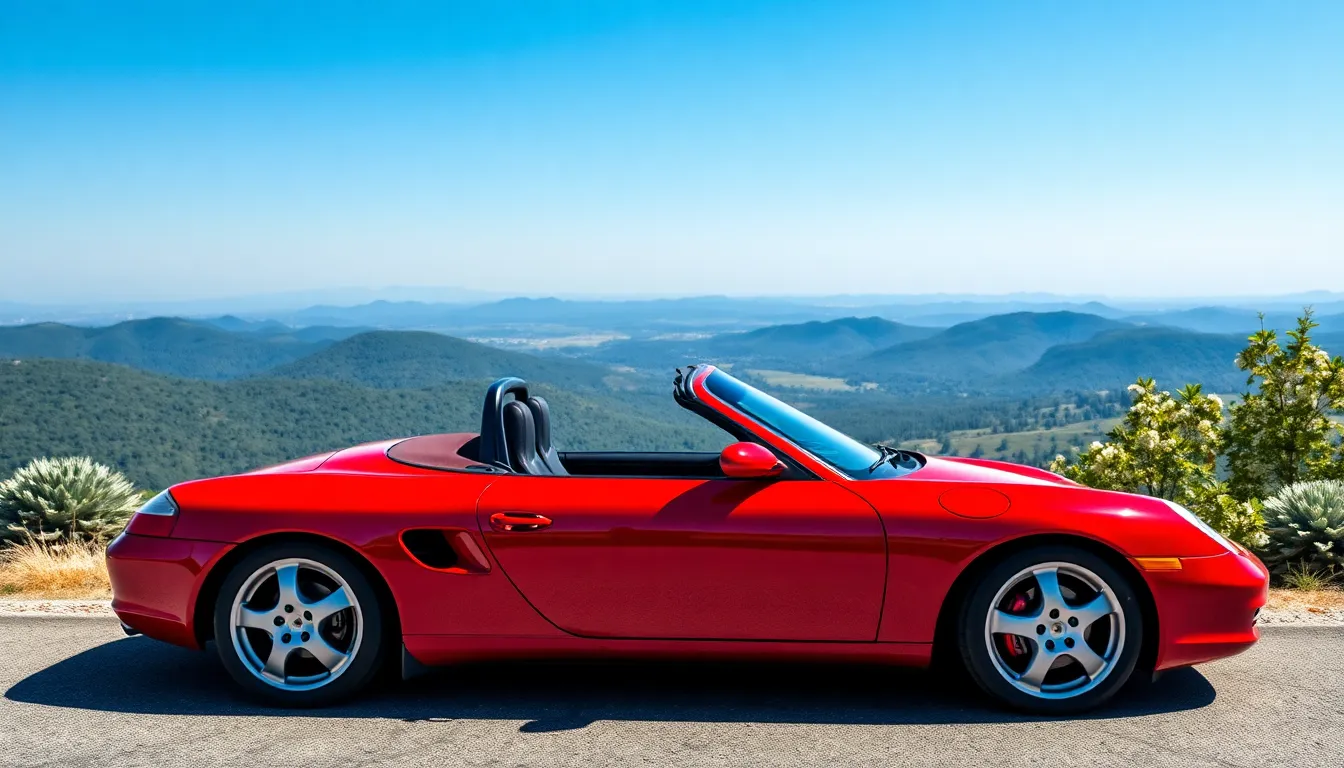
Market values for the Porsche Boxster 986 vary significantly based on condition, mileage, and maintenance history. Current pricing reflects the model’s growing collector appeal as enthusiasts recognize its historical significance in Porsche’s roadster evolution.
Current Market Pricing
Boxster 986 values currently range from $8,000 to $35,000 depending on specifications and condition. Base 2.5-liter models from 1997-1999 typically trade between $8,000-$15,000 for higher-mileage examples with maintenance needs. Well-maintained examples with service records command $15,000-$22,000 in today’s market.
The 2.7-liter variants from 2000-2004 represent better value propositions, with prices spanning $12,000-$25,000. Clean examples with documented maintenance histories fetch premium pricing in the $20,000-$25,000 range. Boxster S models command the highest values, starting at $18,000 for project cars and reaching $35,000 for pristine examples with low mileage.
| Model Year | Engine | Condition | Price Range |
|---|---|---|---|
| 1997-1999 | 2.5L | Fair/Good | $8,000-$15,000 |
| 1997-1999 | 2.5L | Excellent | $15,000-$22,000 |
| 2000-2004 | 2.7L | Fair/Good | $12,000-$20,000 |
| 2000-2004 | 2.7L | Excellent | $20,000-$25,000 |
| 2000-2004 | 3.2L S | Fair/Good | $18,000-$28,000 |
| 2000-2004 | 3.2L S | Excellent | $28,000-$35,000 |
What to Look for When Buying
Documentation proves critical when evaluating any Boxster 986, particularly service records addressing known issues like IMS bearing replacement and RMS seal repairs. Complete maintenance histories demonstrate proper care and help justify higher asking prices. Original window stickers, spare keys, and owner’s manuals add value and authenticity to prospective purchases.
Engine health requires thorough inspection during the buying process. Listen for unusual noises during idle and acceleration, particularly grinding sounds from the IMS bearing area. Oil analysis reports from recent services provide valuable insights into internal engine condition. Coolant system integrity demands attention, with particular focus on plastic pipe connections that commonly fail between 60,000-80,000 miles.
Transmission operation deserves careful evaluation in both manual and automatic variants. Manual transmissions require smooth shifting across all gears without grinding or hesitation. Clutch engagement points indicate remaining service life, with high engagement suggesting imminent replacement needs. Tiptronic automatic versions demand proper fluid service history and smooth operation through all gear changes.
Convertible top mechanisms frequently develop problems after 15-20 years of operation. Test complete cycles multiple times, checking for smooth operation and proper sealing. Hydraulic pump noises or slow operation indicate maintenance requirements. Rear window clarity affects visibility and replacement costs range from $800-$1,500 depending on material choice.
Suspension components show wear through uneven tire patterns and handling characteristics. Inspect shock absorbers for leakage and proper damping response. Steering rack condition affects handling precision, with excessive play indicating rebuild requirements. Brake system evaluation includes pad thickness, rotor condition, and fluid contamination levels that compromise performance safety.
How the 986 Compares to Modern Boxsters
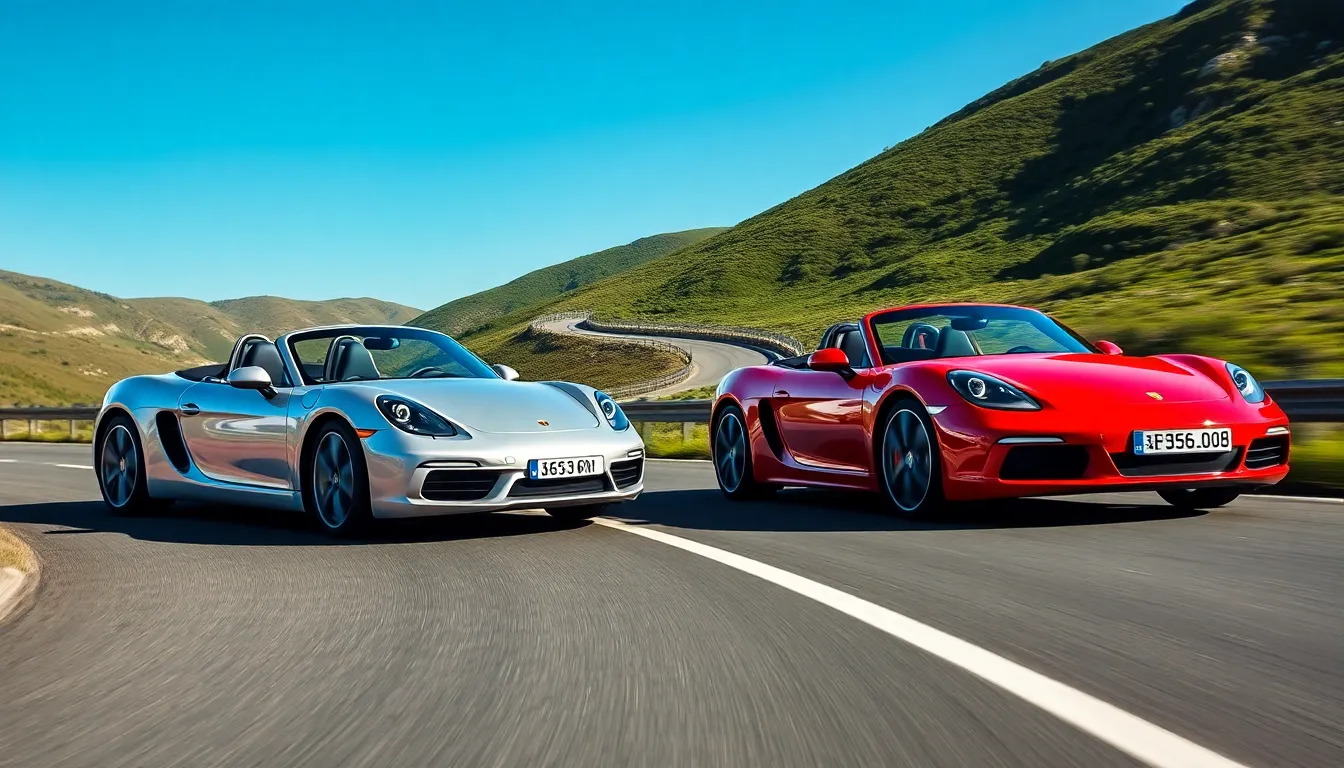
The original Boxster 986 established the foundation that modern generations continue to build upon, though substantial technological advances separate today’s models from this pioneering roadster. Engine power represents the most dramatic evolution, with the current 718 Boxster producing 300 horsepower from its turbocharged 2.0-liter four-cylinder compared to the 986’s naturally aspirated 2.5-liter flat-six generating 201 horsepower. Acceleration figures highlight this progression, as modern variants achieve 0-60 mph in 4.9 seconds versus the original’s 6.7-second benchmark.
Weight distribution philosophy remains consistent across all generations, maintaining the mid-engine layout that defines Boxster handling characteristics. Modern iterations incorporate advanced materials like carbon fiber and aluminum extensively, reducing overall weight while increasing structural rigidity by approximately 40% compared to the 986’s steel construction. Suspension technology has evolved from the 986’s conventional setup to current adaptive damping systems that adjust compression and rebound rates in real time.
Technological integration marks perhaps the greatest departure from the 986 experience. Contemporary Boxsters feature touchscreen infotainment systems, smartphone connectivity, and digital instrument clusters, contrasting sharply with the analog gauges and basic radio found in first-generation models. Safety systems now include automatic emergency braking, lane departure warning, and adaptive cruise control, none of which existed during the 986’s production era.
| Comparison Category | Boxster 986 (Base) | Modern 718 Boxster |
|---|---|---|
| Engine Power | 201 hp | 300 hp |
| 0-60 mph Time | 6.7 seconds | 4.9 seconds |
| Top Speed | 149 mph | 171 mph |
| Curb Weight | 2,822 lbs | 2,888 lbs |
| Starting Price (Adjusted) | $45,000 | $65,000 |
Design language evolution connects the 986 to modern Boxsters through shared proportions and signature elements, though contemporary versions feature sharper lines and more aggressive styling cues. Side air intakes remain prominent across all generations, maintaining visual continuity while serving enhanced cooling requirements of modern turbocharged engines. Interior quality has progressed significantly, with current models offering premium leather, carbon fiber accents, and customizable ambient lighting compared to the 986’s functional but basic cabin appointments.
Driving dynamics showcase both continuity and evolution in Boxster philosophy. The 986’s natural throttle response and linear power delivery contrast with modern turbocharged characteristics that provide immediate torque but different auditory feedback. Steering precision remains exceptional across all generations, though current electric power steering lacks some of the mechanical feedback that 986 enthusiasts appreciate. Track performance capabilities have expanded dramatically, with modern stability systems and torque vectoring improving cornering speeds beyond what the original’s simpler electronic aids could achieve.
Reliability patterns differ substantially between generations, as the 986’s known issues like IMS bearing failures have been resolved in contemporary models through redesigned engine architecture. Modern Boxsters benefit from improved manufacturing tolerances and quality control processes, reducing common maintenance concerns that affect first-generation ownership. Service intervals have extended from the 986’s conservative recommendations to longer periods between major maintenance items, reflecting improved component durability and synthetic fluid technology.
Conclusion
The Porsche Boxster 986 remains a compelling entry point into authentic Porsche ownership. Even though its known mechanical challenges the 986 offers an unmatched combination of driving pleasure and relative affordability that continues to attract enthusiasts worldwide.
We’ve seen how this groundbreaking roadster established the foundation for modern Porsche convertibles while delivering genuine sports car performance. The distinctive flat-six soundtrack and balanced chassis dynamics create an experience that’s difficult to replicate at this price point.
For those willing to address its maintenance requirements proactively the 986 rewards owners with timeless styling and captivating performance. Whether you’re seeking your first Porsche or adding to an existing collection the Boxster 986 represents a important chapter in automotive history that’s still accessible to passionate drivers today.
Frequently Asked Questions
What is the Porsche Boxster 986?
The Porsche Boxster 986 is the first generation of Porsche’s mid-engine roadster, produced from 1996 to 2004. It featured water-cooled flat-six engines ranging from 2.5-liter (201 hp) to 3.2-liter (250 hp in the S model), with an electrically operated convertible soft-top and advanced suspension systems that established the foundation for modern Porsche roadsters.
What are the performance specifications of the Boxster 986?
The base 2.5-liter model achieves 0-60 mph in 6.7 seconds, while the 2.7-liter variant does it in 6.4 seconds with 217 horsepower. The flagship Boxster S, featuring a 3.2-liter engine with 250 horsepower, accelerates from 0-60 mph in 5.9 seconds and reaches a top speed of 161 mph.
What are common reliability issues with the Boxster 986?
Common issues include Intermediate Shaft (IMS) Bearing Failure, Rear Main Seal (RMS) leaks, coolant pipe failures, timing chain tensioner problems, and clutch wear. These problems can lead to significant engine damage and costly repairs if not addressed proactively through regular maintenance and inspection.
How much does a Boxster 986 cost today?
Current pricing ranges from $8,000 to $35,000 based on condition, mileage, and maintenance history. Lower-priced examples typically require more attention, while well-maintained models with complete service records command premium prices. Thorough inspection of engine health, transmission, and convertible top operation is essential when purchasing.
How does the 986 compare to modern Boxster models?
Modern 718 Boxsters produce 300 horsepower from turbocharged four-cylinder engines, achieving 0-60 mph in 4.9 seconds compared to the 986’s best time of 5.9 seconds. Contemporary models feature advanced materials, adaptive suspension systems, and resolved reliability issues, while maintaining the classic mid-engine layout and Porsche driving dynamics.
What maintenance is required for the Boxster 986?
Essential maintenance includes strict oil change intervals, regular coolant system service, brake fluid replacement, timing chain tensioner inspection, and clutch service monitoring. Proper maintenance helps prevent catastrophic failures like IMS bearing issues and ensures optimal performance and longevity of this classic sports car.

